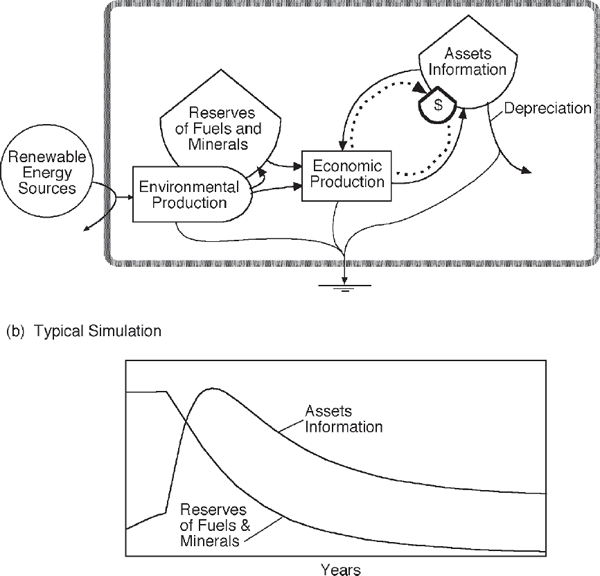
THE GROWTH of civilization on the nonrenewable reserves of the earth is surging to a climax of information miracles, stormy economics, turbulent populations, concentrated wealth, and bewildering complexity. Although the future is always masked by the oscillations of smaller scale, the empower of society may be at climax in transition to times of receding energy. This last chapter uses principles of energy hierarchy and pulsing to anticipate the future, suggest adaptive policies, and seek a prosperous way down.1
MODELS AND WARNINGS OF THE GLOBAL FUTURE
Figure 13.1a summarizes how the economy of society is supported by renewable energies of environmental production and reserves of fuels and minerals accumulated over geologic time. Many authors who compare the remaining nonrenewable resource reserves with the steep growth of population, consumption, and the economy warn with frantic voices that the present civilization is unsustainable.2
Computer Simulation Scenarios
Since Environment, Power, and Society was published, hundreds of models and computer simulations relating the global future to resources have been published, some simple and some complex. They all generate a similar curve of growth (fig. 13.1b), like that anticipated in Environment, Power, and Society,3 cresting as the fuels diminish and then descending. Many scientists, including this author, take the top-down overview of Earth and resources and make aggregated, simple minimodels of resources and assets.4 As explained by the energy hierarchy concepts of this book, they believe the larger-scale trends are determined at the larger scale into which the smaller-scale mechanisms have to fit. They obtain smoothed curves of growth, climax, and descent like the example in fig. 13.1b. See also figs. 3.12, 9.11, and 10.2e and f.

FIGURE 13.1 Growth curves of typical simulation minimodels on nonrenewable and renewable energy. (A) Energy systems diagram; (B) pulse of typical simulations.
Others, who think from the parts up, put in more of the complexity that they see around them.5 They believe that the causality of the larger scale is generated by the smaller-scale mechanisms. Their simulation curves have more short-range ups and downs. These may be appropriate as long as they are realistic in driving the models with renewable and nonrenewable energy resources. If these simulations are smoothed, the overall shapes of the curves are similar to the one in fig. 13.1b. The timing of the peak varies because of different estimates of nonrenewable reserves, different assumptions about the efficiencies of energy conversion to assets, and different assumptions about depreciation rates.6
The fact that most of the resource-based models peak sooner if more fuel reserves are assumed sometimes is regarded as a paradox. More available energy causes a steeper growth frenzy, which uses up resources faster. If this principle is correct, then finding more nonrenewable resources will not delay descent.
Voices of Concern
Ever since the fuel-driven Industrial Revolution began, and especially since energy concern became intellectual mainstream in the 1970s, more and more voices have warned of the eventual downturn caused by resource depletion. Some come from resource scientists who calculate and project reserves; some come from historians and anthropologists who record the demise of past civilizations. Because these warnings have come so often and for so long, present society concerned with the short run ignores “doomsayers,” whom they believe to have been wrong before. It’s the situation of the boy who cried wolf too soon and too often.
Warnings started with Malthus in 1798, predicting disaster from exponential population growth. Other influential examples include Nussbaum (1983), Diamond (1998), Catton (1982), Ehrlich (1968, 1974), Fey and Lam (2000), Hardin (1993), Henderson (1991, 1996), Georgescu-Roegen (1977), Kaplan (1996), and Tainter (1988). Duncan (1989) called boom and bust “the Olduvai Theory.” Fey and Lam (2000) called for a Manhattan Project–style national effort to prepare. Recently, there have been many warnings of catastrophic descent on the Internet at Jay Hanson’s Web site, DIEOFF, and discussion group (energyresources@onelist.com) and Bruce Thomson’s RunningOnEmpty@onelist.com.
Energy Crisis Inquiry
Today, government and the collective media have little institutional memory of the extensive discussions of energy before and after the 1973 energy crisis. The new generation can learn from Adams (1988), Ayres (1978), Cook (1976), Cottrell (1955), Fluck and Baird (1980), Freeman (1974), Hall et al. (1986), Herendeen and Bullard (1975), Hubbert (1949), Krenz (1976), Lovins (1977), Odum and Odum (1982, 2000, 2001), Peet (1992), Pillet and Odum (1987), Pimentel and Pimentel (1979), Slesser (1978), Smil (1991, 1998), Spreng (1988), Stanhill (1984), Steinhart and Steinhart (1974), and the Annual Reviews of Energy issued each year.
Emergy Reserves and Alternative Sources
Consensus seems to be developing among resource geologists as to the reserves of global fuels available and the time when the cost of processing will allow prices to rise and the economy to turn down. Campbell (1997) provided a record and extrapolation of fuel production and use (fig. 13.2), with a peak in about 2009. It shows how growth of the global economy was arrested in the late 1970s with high inflation caused by the oil embargo’s high fuel prices. Fleay in The Decline of the Age of Oil (1995), Campbell in The Coming Oil Crisis (1997), Youngquist in Geodestinies (1997), and Magoon in Are We Running Out of Oil (2000) reviewed the history and availability of oil and other resources required for civilizations, also concluding that the present trends in population and economic growth are not sustainable.
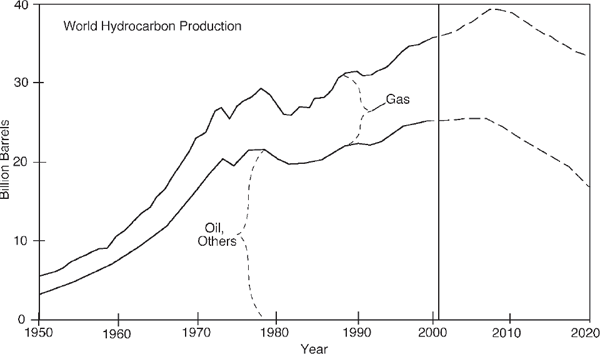
FIGURE 13.2 Past and future trend in fuel use by the United States (Campbell 1997).
The majority of people on Earth have developed an almost religious faith that technology can provide alternative energy sources. They don’t understand that technology requires available energy. Even leaders in science and engineering think available energy of low transformity such as sunlight can be substituted for high-transformity fuels (Brown 2000). They have not learned the law of energy transformation hierarchy (chapter 4). chapter 7 already explained that there are no large energy sources known with enough net emergy contribution to replace the fossil fuel bonanza as it recedes.
Gradual Descent or Crash
Although many simulation scenarios show some kind of gradual descent to a lower-energy world (fig. 13.1b), most of the voices of concern anticipate or warn of a crash, with apocalyptic collapse of society, decimation of population, loss of knowledge, and destruction of the environment. Some hold the view that crashing and starting over is more humane. The weakened civilizations may be abruptly removed by conquest. The conquest of Rome by less developed “barbarians” was analogous to the clean removal of a weakened oyster reef by epidemic microbial diseases.
Our modern culture is so oriented to the goodness of growth that it regards any kind of descent as the antithesis, as bad, evil, catastrophic, unacceptable, or unthinkable. Fortunately, shared human beliefs and social resolutions can change suddenly when the public attention receives the small shocks from smaller-scale pulses. The danger is that people panic as growth stops and act out a self-fulfilling prophecy.
The rate of descent in our “renew plus nonrenew” simulation models depends on the depreciation rate of the structural storage of assets. The higher the assets are in the energy transformation series, the larger the storage, and the less the percentage depreciation per year (chapter 4, fig. 4.9). Depreciation rates are compared in fig.13.3a. A decrease of 8% per year is quick enough to be called a crash. Many people think of economic assets as depreciating 5% per year (turnover time 20 years). Infrastructure of Texas highways is 2% per year (turnover time 50 years; Lyu 1986). But the essence of our modern society is in its widely shared information (religion, Internet, language, education, high-tech knowledge), which has taken two or three centuries to develop. Figure 13.3a shows the decline if information decrease was 0.5% per year. Whereas many futurists find inertia when they extrapolate human populations, the point was made with fig. 10.2 that populations can decline as fast as the economy when there is loss of energy support.
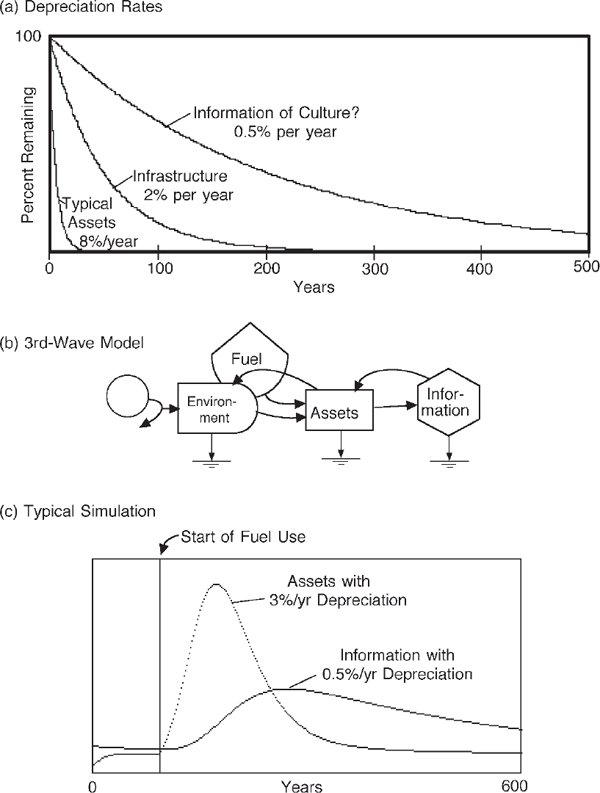
FIGURE 13.3 Depreciation and its effect on the pulse of civilization. (a) Graph Of depreciation rates; (b) main blocks of model simulating cascade to information; (c) typical simulation.
The self-accelerating information system emerging at the beginning of the 21st century is like a large consumer at the end of the energy transformation chain (fig. 13.3b). Its development is sometimes called a third wave (Toffler 1980). A simulation minimodel using renewable and nonrenewable sources generated the curves in fig. 13.3, with information developing a maximum after the peak of material assets.
Glimpses of Fuel-Limited Futures
Three episodes in the history of energy use in the last century provide insights. First, after the crash of the stock market in 1929, the world had a decade of no growth. Energy use declined. In the United States, the pause was enough to create antigrowth attitudes, frugal living, respect for real wealth, and initiatives for social welfare. But the Great Depression was not caused by the lack of energy resources; instead, disruption of money circulation, displacement of people, and other causes (chapter 9) were responsible. In Europe, faith in governments was lost, and desperate people embraced dictatorships. Like weeds, they eliminated diversity and accelerated military invasions for resources to support fanatic missions of conquest (overgrowth). The outcome was World War II. However, in the no-growth times ahead, there will not be much energy available to support overgrowth societies.
Second, shocks caused by short-range oscillations of economic pulsing and resource use have already given us glimpses of the future of an energy-based decline. The oil-supplying countries had enough monopoly of developed oil wells in 1973 to raise international oil prices. Because the price of oil jumped 60 times in a short time, the real wealth received in trade by many countries dropped 60 times, causing at least 25% inflation and economic declines (called stagflation). Societies became energy conscious, with programs of energy conservation. But the oil monopoly could not be sustained long because the high prices accelerated use of the undeveloped remaining oil elsewhere (e.g., in Alaska), development of pipelines to use natural gas, return to coal use in electric power plants, and dependence on nuclear power plants. In 2001, increasing demand and decreasing energies allowed the Organization of Energy Producing Countries (OPEC) to control prices, once again stopping growth.
Third, in 1991, when the Iraq dictatorship invaded Kuwait, the world was threatened with loss of access to most of the oil reserves on which all developed countries depend (25% of the emergy of the United States but almost all of the emergy of many developed economies of Europe and Asia). The United States led a Persian Gulf War to which most developed countries contributed (Odum 1995). At least for a time, the war prevented a dictatorship from taking over the main remaining fuel reserves, most of which are in adjacent countries of the Near East. The U.S. military capacity that won the war had been built up by a previous administration using borrowed money and deficit financing, which contributed to a subsequent recession. In other words, the emergy of social welfare was diverted to the war.
Whether fuel-dependent nations of the world can always keep fuel reserves on the international free market is an open question. During the 1973 energy crisis, the U.S. Navy fleet in the Mediterranean was unable to go to sea for lack of fuel. When available energy is scarce, only local and limited wars are possible (chapter 10).
Whereas national security policies should hold a nation’s native resources in reserve and use imported Near East fuels first, many nations in recent years have done the reverse, stupidly using their last native reserves to be “energy independent” now, ensuring their energy destitution, military weakness, and national prostration later.
Empower Wave of Information Splendor
In fig. 13.1, the global production and accumulation of assets are lumped together, whereas the real world is an energy hierarchy. When large reserves of fuel energy are injected, energy passes through a series of transformations spreading through the energy hierarchy as a wave upscale and downscale, as explained in chapter 4.7 Part of the concentrated minerals and fossil fuels that have entered the economy of industrial cities was transformed into products that dispersed outward (downscale in the hierarchy) to intensify agriculture, fisheries, aquaculture, forestry, and the ecosystems. Even more of the new fuel emergy spread upscale through autocatalytic energy transformations to higher and higher transformity (fig. 13.4). As explained in chapter 4, energy that is transformed to high transformity converges spatially to centers and may achieve its highest level in a sharp, unsustainable pulse.
In common language, the Industrial Revolution captured the economy starting with wood, charcoal, coal, and water power, followed by oil, nuclear fuel, and natural gas. People and processes moved into the cities, transformed the chemistry of society, intensified rural production, and created a brilliance of information processing centers by the end of the 20th century. Figure 13.4 shows the wave along a graph with increasing transformity to the right. The information explosion of the 21st century is based on the high emergy of the earlier Industrial Revolution. While the public dreams of science fiction futures, the roots that support the information wave are already declining.
POLICIES FOR CLIMAX
After the centuries of growth, many people sense that civilization is leveling off and succession is reaching a climax. Public policy is already engaged in trying to sustain society at the present levels, although this is not possible on known resources. Table 13.1 summarizes growth policies that have been operating for two centuries. But societies that continue growth policies when growth is not possible will waste emergy and be displaced.
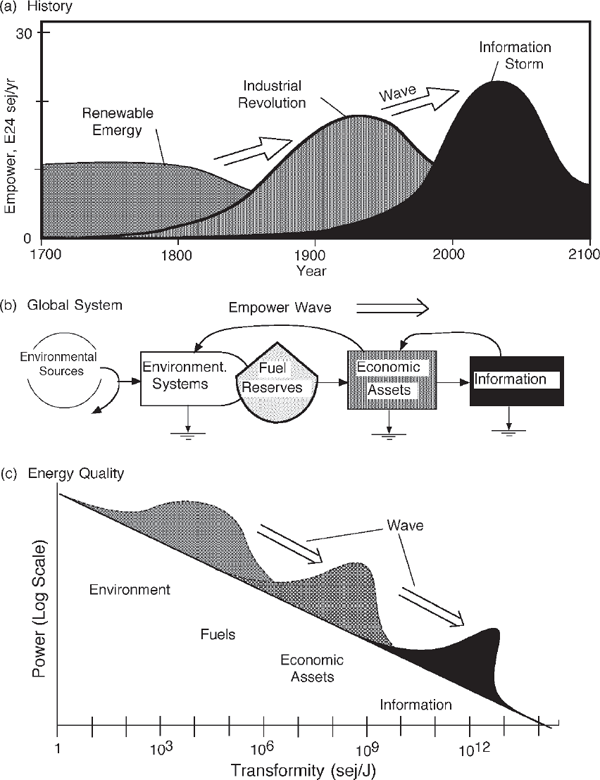
FIGURE 13.4 Wave of emergy passing from resources to the Industrial Revolution to the apex of information. (a) Empower over time; (b) stages passed by the wave along the system; (c) Wave of transformity increase.
POWER CONTROL AT THE MINE AND WELLHEAD
The greatest need for stabilizing climax is to gain control of the fossil fuel supplies for the public interest. There must be enough international agreement to prevent runaway growth of any country that seems temporarily good for it but becomes cancerous for all in the long run. We need to explain the energy policies needed to the citizens of the world. Religious programs need to adopt energy ethics (chapter 11). If the economists advising our planning endeavors will incorporate the basic energy drives in energy-econometric models, as indicated in chapter 7, then we may substitute more certainty for the heretofore elusive ability to predict economic details using an incomplete model. The rising levels of education and worldwide television communication may make all this possible.
TABLE 13.1 Policies Appropriate During Growth
| Maximize empower through low-diversity overgrowth. |
| Reproduce. |
| Encourage immigration. |
| Compete, displace. |
| Borrow and loan. |
| Permit large differences in income and wealth. |
| Minimize regulation. |
| Emphasize increasing wages by labor unions. |
| Maintain defense forces, expect war with other expanding centers. |
| Increase money supply. |
| Build temporary-quality construction rapidly. |
| Allow growth to absorb unemployment. |
| Encourage stocks, bonds, and other unearned income. |
| Couple environment to fuel-using economic production. |
| Accelerate centers of development with unequal exchange. |
| Set priorities for development of fuel, transportation, and water resources. |
To keep an economy healthy after growth requires new policies. Recommendations that are based on energy principles from previous chapters are suggested in table 13.2. These increase the efficiency of energy processing, increase diversity and division of labor, eliminate waste and luxury, reinforce environment, and stabilize international exchanges. The United States formed its institutions while overgrowing a frontier. To remain vital, it will have to change the beliefs, laws, and constitutions that were originally reinforced by growth.
WAYS OF DESCENT
In modern history there is little precedent for a diminishing economy. The simulations of most models of society descend gradually (because the modelers leave out crash mechanisms). We know from energy principles, models, and ecosystems that a gradual descent is possible (fig. 13.3b), but so is a crash. If society does not succeed in changing attitudes and institutions for a harmonious descent, the alternative is to prepare information packages for the contingency of restart after crashing. Television dramas often show pathological disintegration and violence that writers imagine will follow social disorganization.
TABLE 13.2 Policies for Sustaining Climax
| Maximize empower through high-diversity, efficient cooperation.a |
| Change industries concerned with new construction to maintenance.a |
| Reduce borrowing to that concerned with replacement (not growth).a |
| Hold money supply constant. |
| Don’t expect much unearned income from interest and dividends.a |
| Adopt a zero population growth rate. |
| Replace low-quality growth structure with structure of lower depreciation. |
| Provide incentives to eliminate luxury use of fuels, cars, and electric power.a |
| Regulate foreign exchanges for emergy equity between nations.a |
| Provide public works programs for the unemployed. |
| Provide part-time jobs for the retired as long as health permits.a |
| Place a ceiling on individual income.a |
| Share information without profit.a |
| Develop a national campaign to respect people by their service, not income. |
| aPolicies to continue during descent. |
The fossil record is full of systems that rose and fell to extinction. Biological specialization in organic body development tends to be one-way, with new developments coming from the undifferentiated, unspecialized cells that are tucked away in the powerful main structures of action such as muscle and nerve. In analogy with these facts, many authors after Hegel have suggested the dangers of extinction of the main civilization that might follow any effort to decrease its activity. Can complex civilization de-differentiate? Are uncommitted youth society’s means for programming change?
Gradual Descent
There is plenty of precedent in ecological systems for programmed, organized descent when resources decrease. Many ecosystems decrease without disaster each season. They reduce populations, store their critical genetic information in spores, seeds, hibernating animals, and temporarily transport some out by migration. When available energy returns, there is regrowth.
Prosperous Way Down
Policies for the prosperous way down are suggested in table 13.3 If population is reduced as quickly as available energy, the standard of living (empower per person) need not diminish. Extensive discussion of these policies is in the book A Prosperous Way Down (Odum and Odum 2001).
Crash and Restart
Crashes are also normal in ecosystems. Sometimes they are caused by the population pulses of control species and sometimes when the systems of the next larger scale spread catastrophic impact. Having evolved by adapting to ecosystem dynamics, the diverse pool of species supplies specialists for rapid restoration as needed. Recovery depends on the pool of species information.
After World War II, the American overseas policy known as the Marshall Plan succeeded in rapidly restarting the economies of Japan, Germany, Italy, and other countries. Available energy was cheap, and the level of education was high. With a pool of information, restart was rapid.
But what happens if descent is pathologically disorganized? Global society can learn from the epidemic diseases and social disorder in Africa and other places where society has lost its structure, information, and adequate emergy basis. The organization of global society in descent is not safe if one continent is festering with military pathology, overpopulation, rampant disease, and imperial exploitation of its resources. By helping Africa recover now, the world could learn how to treat sick societies and be prepared with tested policies for a healthy descent on all continents.
Transmitting Information
All the scenarios for saving the essence of civilization entail transfer of essential information to the future (fig. 13.5). The condensation of information from a blooming society to manageable smaller quantities is somewhat analogous to the brain’s condensation of excess information of short-term memories into selected essentials to store in long-term memory. Information centers are likely to reorganize around the hydroelectric power of mountains and other renewable energy resources. There may be enough electric power to sustain the global information network and its role in the organization of society (fig. 10.12d). But centers of useless power dissipation, such as the gaudy night lights of the casinos of Las Vegas, may have to give up their electric power.
Sustaining information is essential to a unified global future, and electric power is essential for sharing information through television and the Internet. Consequently, hydroelectric dams may be given priority over salmon. Higher empower was found in hydroelectric geopotential in the Umpqua River in Oregon compared with its original salmon run of 400,000 fish per year (Odum 2000).
TABLE 13.3 Policies for Prosperous Descent
| Maximize empower through environmental production and efficient use. |
| Endorse lifestyles that limit reproduction. |
| Control population to keep empower per person from decreasing. |
| Downsize by reducing salaries rather than discharging employees. |
| Place an upper limit on individual incomes. |
| Redefine progress as adaptation to earth restoration. |
| Restore natural capital and associated environmental production. |
| Restore environmental reserves, forests, fisheries. |
| Use ecological engineering self-design for environmental–economic interfaces. |
| Use agricultural varieties that need less input. |
| Limit the power of private cars. |
| Plan for more population moving from cities to agricultural towns. |
| Decentralize organizational hierarchy. |
| Select hierarchically organized roads and railroads for maintenance. |
| Direct electric power for useful information processing and sharing. |
| Select and consolidate information for libraries. |
| Reinforce respect for polycultural pluralism. |
| Reduce money circulation to sustain emergy/money ratio. |
| Replace plastic discard packaging with reuse–recycle containers. |
| Plan for annual reduction in budgets. |
| Select for maintenance structures with low depreciation rates. |
| Follow policies indicated by footnote in table 13.2. |
| Share free information for unified cooperation. |
| Balance emergy trade equity to replace free exploitation. |
| Set a priority for ecological net production over consumption. |
| Use capital investment for downsizing. |
| Redefine medical ethics that interfere with genetic selection. |
| Reuse or recycle according to transformity. |
Although energies are still in excess, adequate preparations can be made for preserving and holding the needed knowledge and cultural memory in libraries and universities. Then, plans can be made for a more agrarian system, benefited by the knowledge we now have about them. We can plan for smaller cities, fewer cars, greater ratios of agricultural workers to town consumers, and fewer problems with pollution.
The times that will follow descent may be too far ahead to interest us now. However, it is important for present morale, during transition, to believe that the mission of information progress of our era can continue far into the future, albeit more slowly.
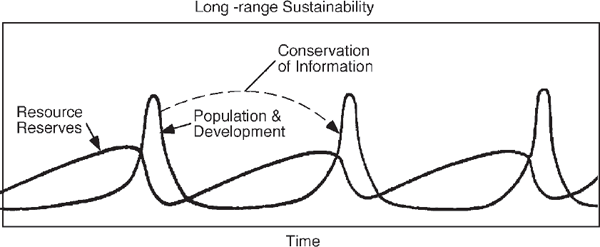
FIGURE 13.5 Transmission of essential information between pulses of progress.
PERIOD OF LOW-EMERGY REGENERATION
After descent may come a long period of subsisting on renewable energies with a neoagrarian economy until enough emergy is stored by earth systems to support more pulses of civilization and progress. On a global basis in 1997, the empower in renewable energy driving society was about one-third of the total budget (fig. 9.4). In the future, with less nonrenewable emergy, developed countries must adapt to nonrenewable empower that is only 10% or 20% of their present use. There will be enough emergy to support the best of the current civilization minus the wastes, luxuries, and excessive population. If essential relevant knowledge of our current civilization is carried forward, the low-energy agrarian society of the times ahead will be based on much more knowledge than the primitive agrarian cultures of earlier centuries.
Later, as in the past, small bursts of innovation and progress can occur here and there where regions have rebuilt emergy stores in soils, virgin forests, peat deposits, and so on. The geologic cycles of the earth will still be concentrating minerals and fuels and moving them upward to the earth’s surface, where accumulations can support flashes of cultural innovation from time to time. Veizer used ingenious ways to estimate these rates.8 However, the very large concentrations of oil, natural gas, coal, and uranium ores that generated the recent era may not occur again for a very long time.
SUMMARY
The human society of the planet is reaching the climax of its succession. Reversals of attitudes, policies, and laws are to be expected in the transition from the era of growth to a time of descent. By developing explanations and plans now for making descent prosperous, we can be ready when the shocks of change galvanize the attention of society. Some can have faith in the future that comes from understanding energy principles. Others will find faith in religions that adapt the necessary commandments for once again fitting culture to the earth.9 The people of Easter Island disappeared, leaving only their monuments (fig. 13.6; see Catton 1982) as an example to the world of what happens when culture cannot downsize to fit its environmental production.

FIGURE 13.6 Monuments of extinction on Easter Island. Photo by Martin Gray (http://sacredsites.com)
BIBLIOGRAPHY
Adams, R. N. 1988. The Eighth Day, Social Evolution as the Self Organization of Energy. Austin: University of Texas Press.
Ayres, R. U. 1978. Resources, Environment & Economics, Applications of the Materials/Energy Balance Principle. New York: Wiley
Barney, G. O. 1980. Global 2000 Report to the President. Washington, DC: U.S. Government Printing Office.
Brown, L. R., ed. 2000. State of the World. Washington, DC: Worldwatch Institute.
Brown, M. T. 1980. Energy basis for hierarchies in urban and regional landscapes. Ph.D. dissertation, University of Florida, Gainesville.
Campbell, C. J. 1997. The Coming Oil Crisis. Brentwood, Essex, UK: Multi-Science.
Catton, W. R. 1982. Overshoot. Champaign: University of Illinois Press.
Cook, E. 1976. Man, Energy, and Society. San Francisco: W.H. Freeman.
Cottrell, F. 1955. Energy and Society. New York: McGraw-Hill.
Diamond, J. 1998. Guns, Germs, and Steel. New York: W.W. Norton.
Duncan, R. C. 1989. The life expectancy of industrial civilization: The decline to global equilibrium. Population and Environment, 14(4): 325–257.
Ehrlich, P. R. 1968. The Population Bomb. New York: Ballantine.
———. The End of Affluence. New York: Ballantine.
Fey, W. and A. Lam. 2000. The Bridge to Humanity’s Future. Available at EcocosmDynamics. org.
Fleay, B. 1995. The Decline of the Age of Oil, Petrol Politics: Australia’s Road Ahead. Annandale, NSW: Pluto.
Fluck, R. C. and D. C. Baird. 1980. Agricultural Energetics. Westport, CT: AVI.
Forrester, J. 1971. World Dynamics. Cambridge, MA: Wright Allen.
Freeman, D. 1974. Energy, The New Era. New York: Vintage.
Georgescu-Roegen, N. 1977. The steady state and economic salvation: A thermodynamic analysis. BioScience, 27: 266.
Hall, C. A. S., C. J. Cleveland, and R. Kaufmann. 1986. Energy and Resource Quality, The Ecology of the Economic Process. New York: Wiley.
Hardin, G. 1993. Living Within Limits, Ecology, Economics, and Population Taboos. New York: Oxford University Press.
Henderson, H. 1991. Paradigms in Progress: Life Beyond Economics. Indianapolis: Knowledge Systems.
Henderson, H. 1996. Building a Win–Win World: Life Beyond Global Economic Warfare. San Francisco: Berrett-Koehler.
Herendeen, R. A. and C. W. Bullard. 1975. Energy costs of goods and services: 1963 and 1967. Energy Policy, 3: 268.
Hubbert, M. K. 1949. Energy from fossil fuels. Science, 109: 103–109.
Kang, D. 1998. Pulsing and Self Organization. Ph.D. dissertation, University of Florida, Gainesville.
Kaplan, R. 1996. The Ends of the Earth. New York: Random House.
Krenz, J. H. 1976. Energy Conversion and Utilization. Boston: Allyn & Bacon.
Lovins, A. B. 1977. Soft Energy Paths: Towards a Durable Peace. New York: Harper & Row.
Lyu, W. 1986. Emergy analysis of highway transportation in Texas. In Student Reports for Policy Research Project Course, 130–157. Austin: L.B.J. School of Public Affairs, University of Texas.
Magoon, L. B. 2000. Are We Running Out of Oil. Menlo Park, CA: Geological Open File 00–320.
McClanahan, T. R. 1990. Hierarchical control of coral reef ecosystems. Ph.D. dissertation, University of Florida, Gainesville.
Meadows, D. H., D. L. Meadows, and J. Randers. 1992. Beyond the Limits. Post Mills, VT: Chelsea Green.
Meadows, D. H., D. L. Meadows, J. Randers, and W. W. Behrens III. 1972. The Limits to Growth. New York: Universe Books.
Nussbaum, B. 1983. The World After Oil, The Shifting Axiom of Power and Wealth. New York: Simon & Schuster.
Odum, H. T. 1983 (1994 edition). Systems Ecology, chapter 23. New York: Wiley. Reprinted as Ecological and General Systems. Boulder: University Press of Colorado.
———.1987. Models for national, international, and global systems policy. In L. C. Braat and W.F. J. van Lierop, eds., Economic–Ecological Modeling, 203–251. Amsterdam: North Holland.
———.1995. Emergy policies for a new world order. In H. Abele, ed., Energy and Environment: A Question of Survival, 177–200. Acta Forum Engelberg 1993. Engelberg, Switzerland: Verlag Stiftsdruckerel.
———.1996. Environmental Accounting, Emergy and Decision Making. New York: Wiley.
———.2000. Emergy evaluation of salmon pen culture. In International Institute of Fisheries Economics & Trade 2000 Proceedings. CD-ROM publication. Corvallis, OR: Department of Agriculture and Resource Economics.
Odum, H. T. and E. C. Odum. 1982. Energy Basis for Man and Nature, 2nd ed. New York: McGraw-Hill.
Odum, H. T. and E. C. Odum. 2000. Modeling for All Scales. San Diego, CA: Academic Press.
Odum, H. T. and E. C. Odum. 2001. A Prosperous Way Down. Boulder: University Press of Colorado.
Peet, J. 1992. Energy and the Ecological Economics of Sustainability. Washington, DC: Island Press.
Pillet, G. and H. T. Odum. 1987. Energie, Ecologie, Economie. Geneva, Switzerland: Georg Editeur.
Pimentel, D. and M. Pimentel. 1979. Food, Energy, and Society. New York: Halstead, Wiley.
Slesser, M. 1978. Energy in the Economy. New York: St. Martin’s Press.
Smil, V. 1991. General Energetics, Energy in the Biosphere and Civilization. New York: Wiley.
Smil, V. 1998. Energies, an Illustrated Guide to the Biosphere and Civilization. Cambridge, MA: MIT Press.
Spreng, D. T. 1988. Net-Energy Analysis and the Energy Requirements of Systems. New York: Praeger.
Stanhill, G., ed. 1984. Energy and Agriculture. Berlin: Springer-Verlag.
Steinhart, J. S. and C. E. Steinhart. 1974. Energy Sources: Use and Role in Human Affairs. North Scituate, MA: Duxbury.
Tainter, J. 1988. The Collapse of Complex Societies. New York: Cambridge University Press.
Toffler, A. 1980. The Third Wave. New York: William Norcrop.
Veizer, J., P. Laznicka, and S. L. Jansen. 1989. Mineralization through geologic time: Recycling perspective. American Journal of Science, 289: 484–524.
Watt, K. 1992. Taming the Future. Davis, CA: Contextured Web Press.
Youngquist, W. 1997. Geodestinies, the Inevitable Control of Earth Resources over Nations and Individuals. Portland, OR: National Book Co.
NOTES
1. Also see our recent book A Prosperous Way Down (Odum and Odum 2001) for other policies, discussion, and details.
2. In chapter 3 of A Prosperous Way Down (Odum and Odum 2001) the authors quote 111 writers about the future.
3. From Environment, Power, and Society (1971:304):
The future can be divided into alternatives according to energy supplies. There is the future of power expanding, the future of power constant, and the future of power receding.…. We are not now sure which future will be next; perhaps they will follow each other in a step-by-step sequence.… National and international planning task forces should be assigned to each.
4. Some of these models and simulations are found in the author’s previous papers and books (Odum 1983, 1987, 1996; Odum and Odum 1982, 2000, 2001) and those of many other authors. The curves in fig. 13.1b were generated by a minimodel PRICEPOLY with the following differential equations:
Reserves = F: dF/dt = –X*K2 *F*R * Q;
Assets =Q: dQ/dt = (X*K3*R *F *Q) + (K4 *R * Q) + Pw;
Renewable energy = R; R = J/[1 + (X* K1*F* Q) + (K0* Q)], where J is energy inflow, Pw is natural production, and X becomes logic 1 when use of the reserves begins.
5. Complex models developed by combining mechanisms: Meadows et al. (1972, 1992), Barney (1980), Forrester (1971), Watt (1992).
6. Unpublished model 3RDWAVE contains two production functions converting renewable energy and available materials into the agrarian–environmental block, one using feedbacks from assets and information; four production functions using agrarian–environmental stores into the assets block, one linear, two using fossil fuels, and two using feedback interactions from information; and (3) two production functions converting assets into the information block, one linear and one autocatalytic.
7. The effect of stored energy on an energy transformation hierarchy was simulated by Brown (1980), McClanahan (1990), and Kang (1998), among others.
8. Veizer et al. (1989) estimated rates from survival curves of geologic fuel-generating deposits going back in time as if they were populations of surviving animals.
9. Environment, Power, and Society ended with the following text: “A more powerful morality may emerge through the dedication of the millions … who have faith in the new networks and endeavor zealously for them. Prophet where art thou?” By prophet the author meant someone who could speak the right language to excite the public in energy systems policies. In response to the 1971 book, several religious-oriented writers and students came to us in Gainesville. I regret that they were turned off by our analog computers.